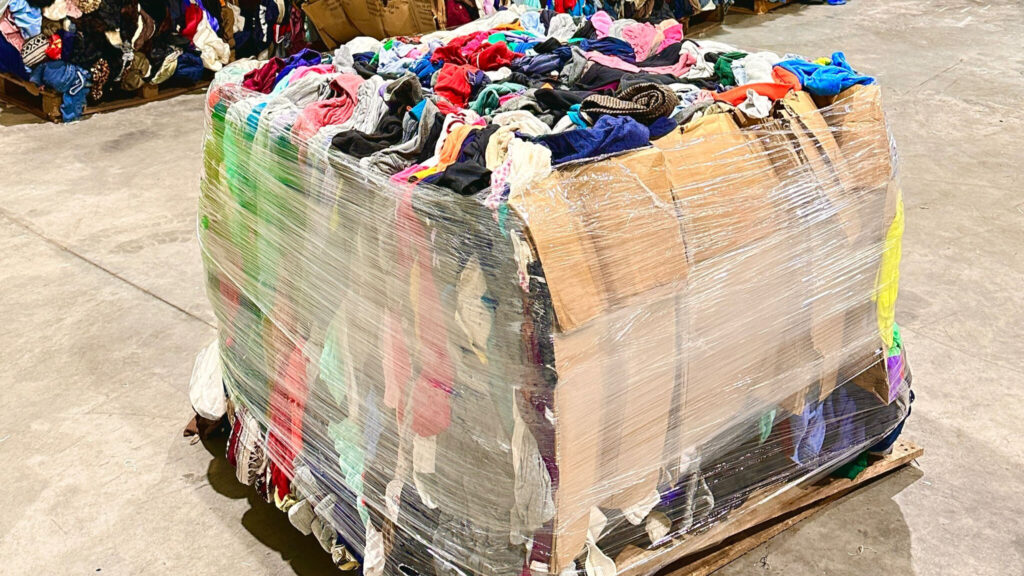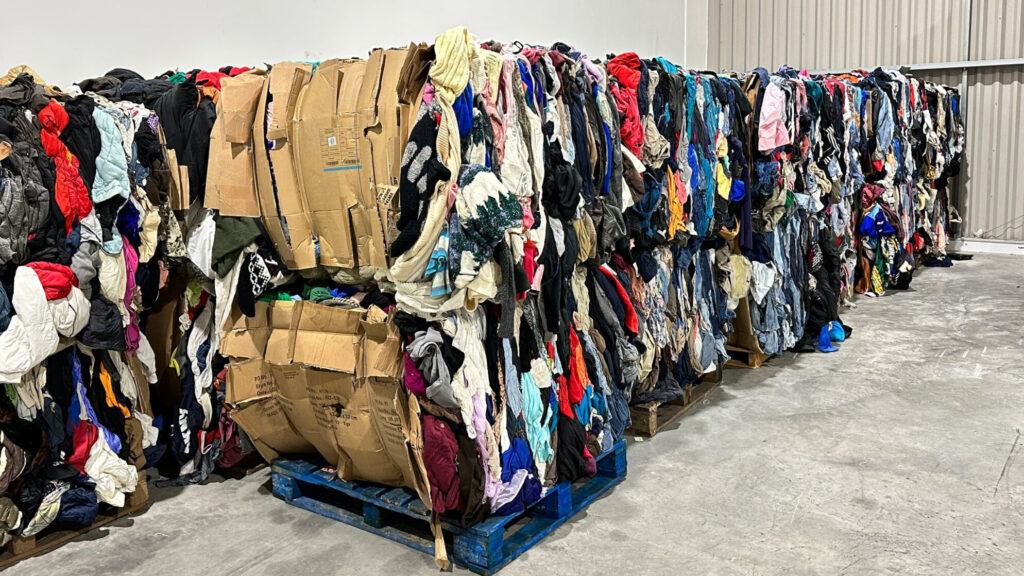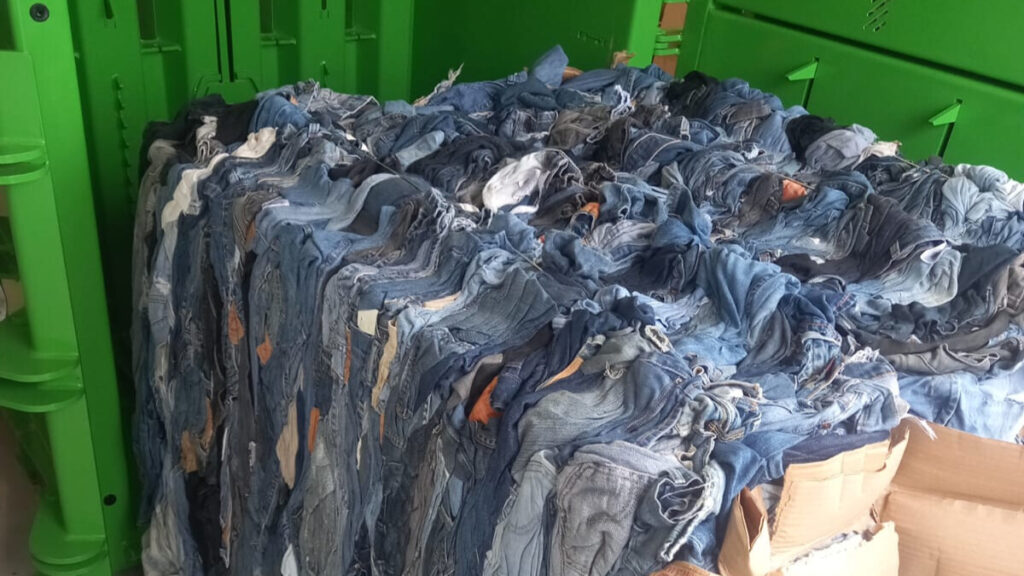Tips for Improving Your Textile Waste Recycling Program

What material’s life cycle has the fourth highest impact on the environment and on climate change? It’s the same material that has the third highest impact on water and land use and fifth highest in terms of raw material use. You’re surrounded by it all day, every day: it’s textiles.
End-of life textiles contribute hugely to the waste produced each year. In the EU, the average person discards 11 kg of various textiles every year. Most textile waste winds up in a landfill or exported to Africa and Asia, where it’s reused, downcycled, or more often, ends up in landfills or informal waste streams.
Because of the scale of materials and the impact, new rules are coming into play to manage textiles. All EU countries must collect textile waste as a separate waste stream by 2025; the UK doesn’t have a similar law but did introduce a new program (Maximizing Resources, Minimising Waste) in 2023 that calls for increased textile resorting and reprocessing to minimise exports and there are voluntary agreements such as Textiles 2023.
In this post, we will cover some of the issues textile waste causes and provide tips for businesses and local governments to improve textile recycling rates.
Why is textile waste such a problem?
Textiles cause headaches across the value chain for many reasons. However, much of the problem stems from the sheer volume of textiles produced every year; this figure continues to grow because textiles are one of the few materials that currently cost less than they did 20 years ago. Worse still, 60% of the 150M garments produced in 2012 were disposed of within only a few years due to quality and trends.
For those working directly with textiles as a manufacturer, retailer, or in waste management, the Fashion For Good 2022 report offers a stark look at the state of textile production today. The world is producing so many low value post-consumer textiles that even with huge investments, 26% of these textiles can’t even be recycled because of their composition.
As with all forms of waste, the primary goal must be to eliminate waste at the source. This means:
- Redesigning textiles so 100% of new textiles can enter the circular economy
- Decreasing the amount of textiles wasted at the source (there is a huge amount of waste with 15% of fabric used in garment manufacturing going to waste at garment factories)
- Committing to reducing production overall (Shein produces 10,000 new products per day; most returns end up in a landfill)
It is more likely that the EU will regulate some of this out of existence; MEPs have already created proposals to stop excessive textile production and simultaneously better respect rights across the board.
However, the responsibility for managing textile waste doesn’t only lie with manufacturers. Everyone has a role to play in diverting textiles from landfills and contributing to the circular economy.

Tips for improving textile recycling in your community
For those businesses on the ground, there isn’t just a role to play but a legal obligation in the form of a new waste directive coming online in 2025. The European Parliament’s Waste Directive (2018) obliges EU countries to separate textile waste by 2025.
If you’re not already doing so, the time is now. Make it an imperative at your business to sort your waste streams and remove textile waste from your landfill to separate it for recycling using the same process as you do for cardboard, plastic, and glass.
For those handling a substantial volume of textiles:
Suggestions for retailers (clothing, charities, department stores):
Shoppers are increasingly savvy as to the impact of textile production on the environment. In the UK, 55% of shoppers said they considered the impact on the environment to be severe. As a retailer, you can provide public education campaigns for textile recycling to:
- Remind customers to never put old clothing or household textiles into their waste bins. (A huge portion of the textiles escaping the circular economy enter landfills via domestic waste. For example, in Ireland, household bins are the single largest source of textile waste (approximately 64,000 tonnes).)
- Provide tips for recycling to maximise the chance of an accepted donation (ensure textiles are clean and dry, remove embellishments and accessories, put them in a secure, waterproof bag).
- Encourage customers to repair clothing to prolong its life and share resources in your local community (clothing repair & alterations)
Go even further and add a textile recycling program to your store, just like H&M and Primark. If you do, consider using a clothing baler to manage the volume of recyclable textiles that you accept in-store.
Suggestions for local councils, recycling centres, and community recycling schemes:
Local textile recycling schemes are already offering an essential service. Yet, the vast majority of textiles make their way to landfills but to increase local uptake, a few suggestions include:
- Advertise your clothing banks and recycling scheme locations and dates of operation.
- Create local public education campaigns to divert clothing and other textiles from general waste.
- Empty the pods regularly and use a clothing baler to manage the volume of recycling collected. Balers can help you take on more recycling without requiring more pick-ups from your waste management provider, which saves on costs and ensures you’re able to empty the pod as frequently as needed.

Help Us Reclaim Textile Waste – Get Started Today
Textiles are an enormous waste stream that continue to make its way to landfills across Europe and around the world. While the transition to the circular economy is slower in this segment than others, like plastic, there is still a substantial amount of room to improve textile recycling in the meantime.
Do you collect textiles in your community or separate them as part of your organisation’s waste management program?
LSM is a provider of balers and compactors that can help you manage textile waste. We can even work with you to create custom solutions for your entire waste management program. To find a clothing baler for sale or rent, get in touch with our team of experts.
Want to discuss your baling needs?
Talk to a DistributorKnow which baler is right for you?
Get a QuoteTrusted Around The World







